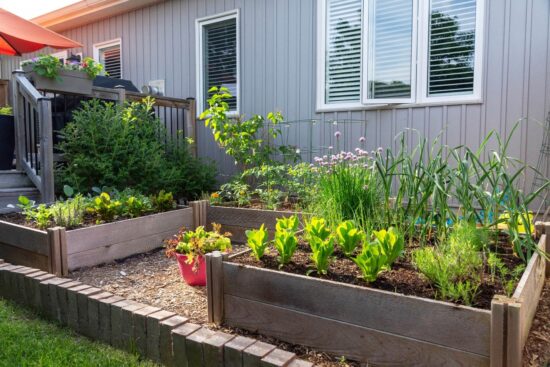Starting a garden is an exciting venture that connects you with nature, promotes sustainability, and can even provide you with fresh produce. However, as with any new project, there’s a learning curve. Many first-time gardeners dive in enthusiastically but make mistakes that can lead to frustration or failure. The good news is that these common pitfalls are avoidable with a bit of knowledge and preparation. Nathan Oeming Eugene Oregon shares the top five mistakes to steer clear of when starting your garden, along with practical tips to set you on the path to success.
1. Skipping Soil Preparation
The foundation of any garden is its soil, yet many beginners overlook the importance of soil health. Poor soil can stunt plant growth, diminish yields, and lead to pest or disease issues.
Why It’s a Problem:
Healthy soil provides essential nutrients, supports root systems, and retains water effectively. Neglecting soil preparation can lead to nutrient deficiencies and compacted soil that inhibits plant growth.
How to Avoid It:
- Test Your Soil: Start with a simple soil test to determine its pH level and nutrient content. Most garden centers sell DIY kits, or you can send a sample to your local agricultural extension office for analysis.
- Amend Accordingly: Add organic matter like compost, aged manure, or peat moss to enrich the soil and improve its structure. If your soil is too acidic or alkaline, adjust it with lime or sulfur, respectively.
- Avoid Tilling Excessively: Over-tilling can destroy beneficial microorganisms and lead to erosion. Instead, use minimal tilling or opt for a no-till gardening method to maintain soil health.
2. Choosing the Wrong Plants for Your Climate
It’s tempting to grow everything from tropical fruits to exotic flowers, but not all plants thrive in every environment.
Why It’s a Problem:
Planting species unsuited to your local climate or soil type can result in weak, unhealthy plants that are more prone to disease and pests.
How to Avoid It:
- Know Your Zone: Determine your USDA hardiness zone and select plants that are well-suited to your region.
- Research Local Favorites: Visit nearby nurseries or talk to experienced gardeners to learn which plants perform best in your area.
- Start Small: Begin with easy-to-grow plants like tomatoes, basil, or marigolds before experimenting with more challenging varieties.
3. Overwatering or Underwatering
Watering is one of the trickiest aspects of gardening to master. Many beginners either drench their plants or leave them parched.
Why It’s a Problem:
Overwatering can suffocate plant roots and create an environment for fungal diseases, while underwatering leads to dehydration and stunted growth.
How to Avoid It:
- Learn Plant Needs: Different plants have different water requirements. Group plants with similar needs together to simplify watering.
- Use Mulch: Mulching helps retain soil moisture and reduces the frequency of watering. It also suppresses weeds and regulates soil temperature.
- Check Before You Water: Stick your finger about an inch into the soil. If it feels dry, it’s time to water; if it’s still damp, hold off.
- Invest in Irrigation: Consider a drip irrigation system for consistent and efficient watering, especially in larger gardens.
4. Neglecting Proper Spacing
Beginners often overcrowd their plants in the excitement of filling their garden beds. While it might look lush initially, this mistake can have serious consequences.
Why It’s a Problem:
Overcrowded plants compete for sunlight, nutrients, and water, leading to poor growth. Lack of airflow also creates conditions for diseases to spread.
How to Avoid It:
- Follow Seed Packet Guidelines: Pay attention to the spacing recommendations on seed packets or plant tags.
- Think Ahead: Consider the mature size of each plant. A tiny seedling can grow into a sprawling bush or vine, so plan accordingly.
- Thin Seedlings: If you sow seeds directly into the soil, thin them out once they sprout to give each plant enough space to thrive.
5. Ignoring Pest and Disease Management
Pests and diseases are inevitable in gardening, but ignoring them or relying too heavily on chemical solutions can harm your plants and the ecosystem.
Why It’s a Problem:
Unchecked infestations can decimate your garden, while overusing pesticides can kill beneficial insects like bees and ladybugs, which are crucial for pollination and pest control.
How to Avoid It:
- Encourage Biodiversity: Plant a variety of flowers, herbs, and vegetables to attract beneficial insects and deter pests.
- Inspect Regularly: Check your plants frequently for signs of pests or diseases, such as discolored leaves, holes, or sticky residue.
- Use Natural Solutions: Employ methods like neem oil, insecticidal soap, or companion planting to manage pests without harming the environment.
- Rotate Crops: If you’re growing vegetables, rotate your crops each season to prevent soil-borne diseases and disrupt pest life cycles.
Starting a garden can be incredibly rewarding, but avoiding these common mistakes will save you time, effort, and disappointment. Remember that gardening is a learning process, and even seasoned gardeners encounter challenges. Begin with a clear plan, be patient with your progress, and celebrate your successes—no matter how small. Soon, you’ll not only have a flourishing garden but also the satisfaction of knowing you’ve cultivated it with care and knowledge.
Happy gardening!
